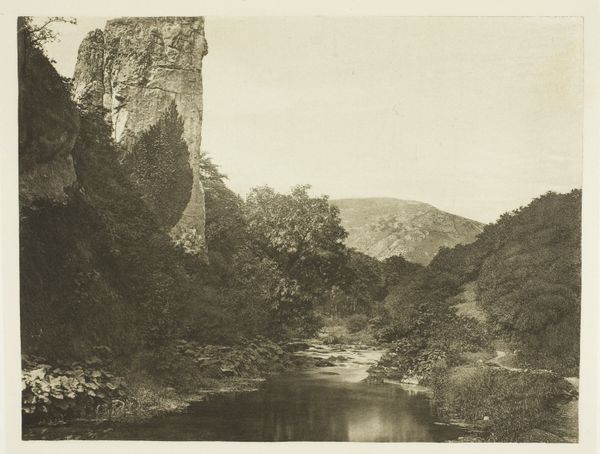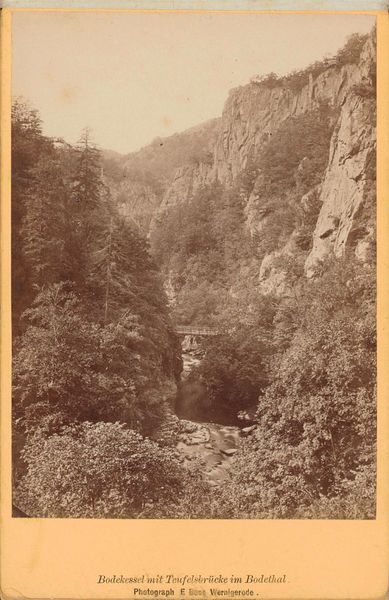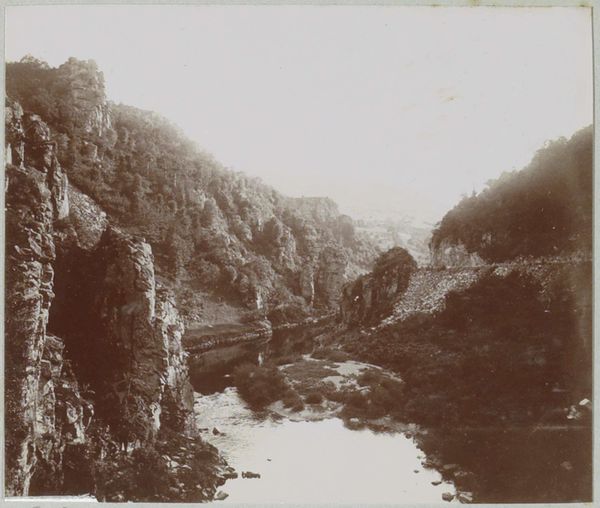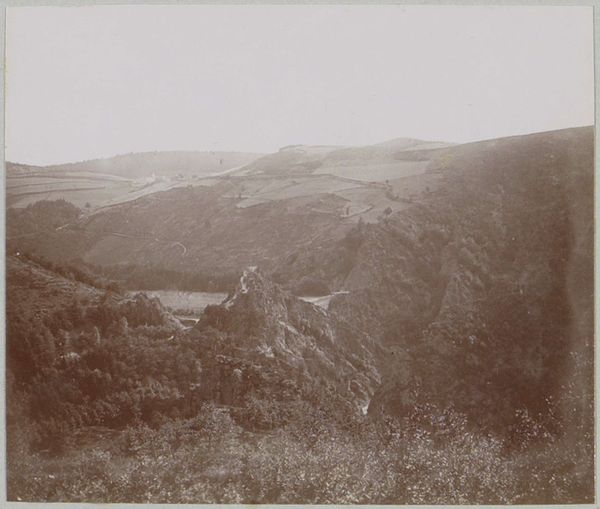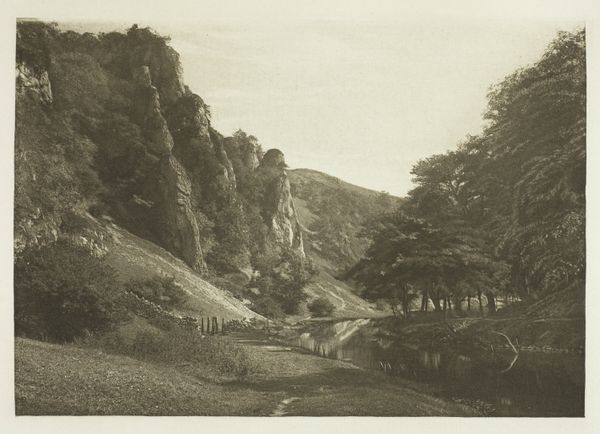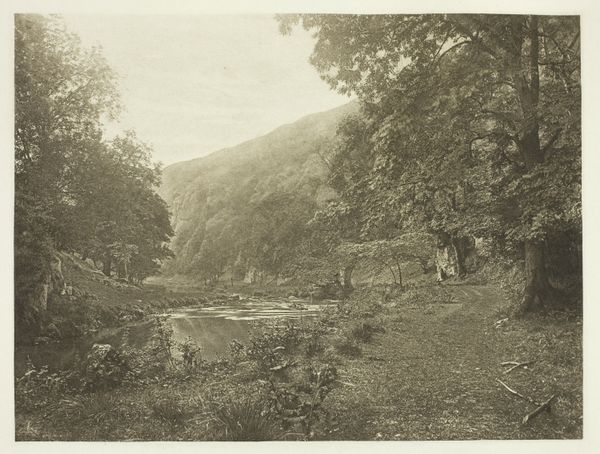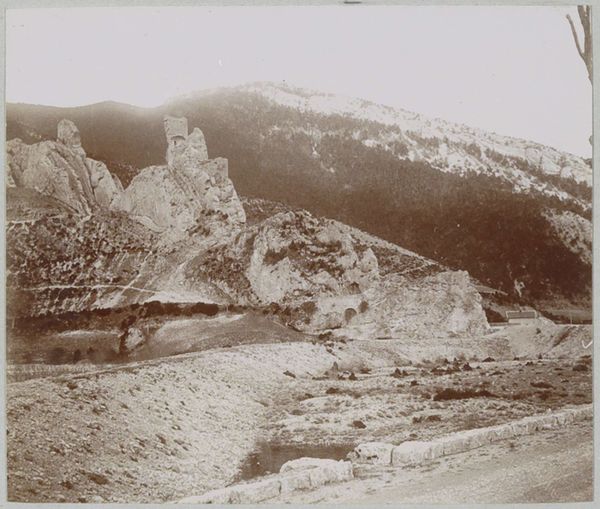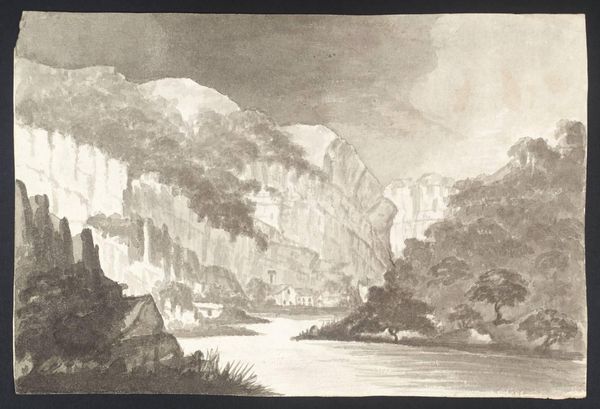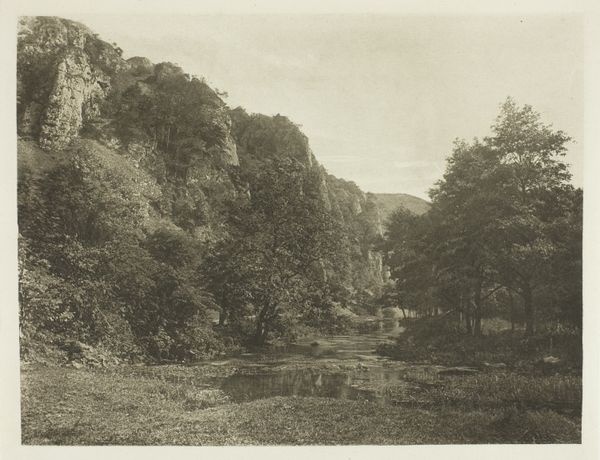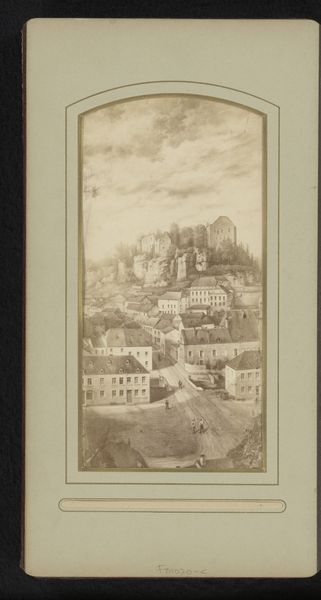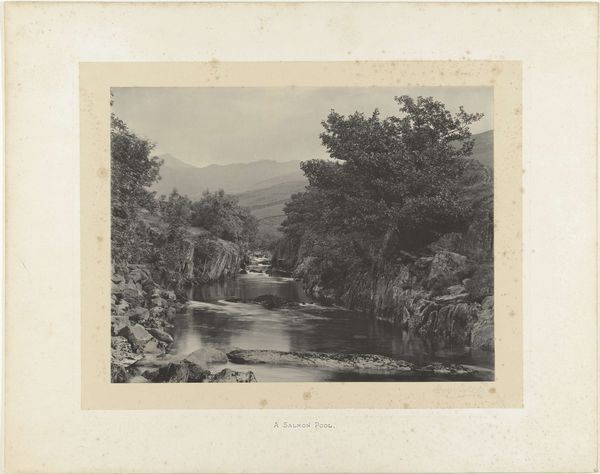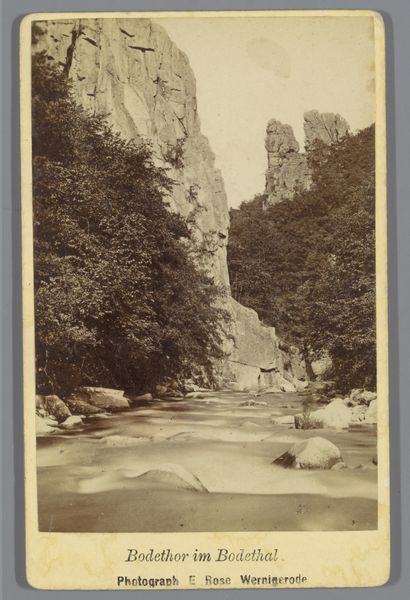
Meeting of the Shenandoah and Potomac at Harper's Ferry 1865
0:00
0:00
print, photography, gelatin-silver-print, albumen-print
#
16_19th-century
# print
#
book
#
war
#
landscape
#
photography
#
old-timey
#
sketch
#
gelatin-silver-print
#
19th century
#
men
#
united-states
#
cityscape
#
history-painting
#
albumen-print
Dimensions: 17.7 × 23 cm (image/paper); 31.2 × 44.7 cm (album page)
Copyright: Public Domain
Editor: This is "Meeting of the Shenandoah and Potomac at Harper's Ferry" by James Gardner, created in 1865 using the albumen print technique. It is a melancholic scene. How can a photograph be simultaneously serene and industrial? What strikes you most about its formal elements? Curator: Observe how the artist uses the albumen print's tonal range to define form. Note the interplay of light and shadow. It almost creates a textured topography in a limited palette. How does this affect the composition's visual weight? Editor: It certainly balances the mass of the mountain against the collection of human-made forms near the base of the image, though not perfectly. I do see some very clear asymmetry there. What significance do you ascribe to the perspective and vantage point? Curator: From an elevated perspective, Gardner uses linear perspective to draw the viewer’s eye into the landscape. Note also the geometry, the repeating shapes of buildings, contrasted with the natural, organic shapes. Do you believe the artist wants to make any particular assertions about humanity and nature? Editor: I suppose the photograph suggests a certain harmony between human endeavor and natural landscape. While industrial interventions like the buildings and the bridge are prominent, they seem small beneath the landscape, almost reconciled with their surroundings. Curator: Precisely. A careful balance is key to our reading of this. What, if anything, have you learned that will stick with you? Editor: The value of exploring contrast—how the artist manipulated visual and material characteristics to express complex, powerful ideas, especially light. I am particularly curious about texture now. Thank you!
Comments
No comments
Be the first to comment and join the conversation on the ultimate creative platform.

